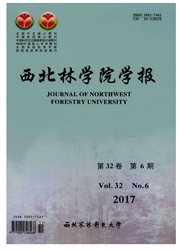

 中文摘要:
中文摘要:
利用1989—2008年间共4次森林资源清查资料,依据生物量转换因子法(BEF)建立的杨树生物量与蓄积量相关方程,对河南省杨树人工林的生物量进行了估算。结果表明:河南省4次森林清查杨树人工林的生物量分别为92.44×104 t、191.88×104 t、1 256.79×104 t和3 454.59×104 t,呈明显增长的趋势; 20 a间,杨树生物量共增加3 362.15×104 t,年均增长224.14×104 t; 而同期生物量密度呈逐年下降的趋势,生物量密度由48.14 t·hm-2下降到37.50 t·hm-2,远低于全国杨树平均水平,表明河南省杨树人工林森林质量较差; 模型的选用对估算区域生物量的大小影响较大,BEF法与生物量转换因子连续函数法估算结果相差33.95%。
 英文摘要:
英文摘要:
Using the forest inventory data from 1989 to 2008, biomass of poplar plantations in Henan Province were estimated with the method of biomass expansion factor(BEF)that was built on the regression equations between stand volume and biomass. The results showed that total biomass of poplar plantations in four periods(1989—1993, 1994—1998, 1999—2003, 2004—2008)were 92.44×104 t, 191.88×104 t, 1 256.79×104 t, and 3 454.59×104 t, respectively. The trends were increasing distinctly with the time. From 1988 to 2008, the total biomass of poplar plantations had increased 3 362.15×104 t in twenty years with an annual increment of 224.14×104 t. However, mean biomass of poplar plantation density decreased with time from 48.14 t to 37.50 t·hm-2 within twenty years. The mean biomass of poplar plantation density in Henan Province was far below to the average in China. Therefore, the quality of poplar plantations was not high in Henan Province. Moreover, the difference was 33.95% when the biomass was estimated by BEF and continuous function BEF, indicating the importance of selecting suitable models.
 同期刊论文项目
同期刊论文项目
 同项目期刊论文
同项目期刊论文
 期刊信息
期刊信息
